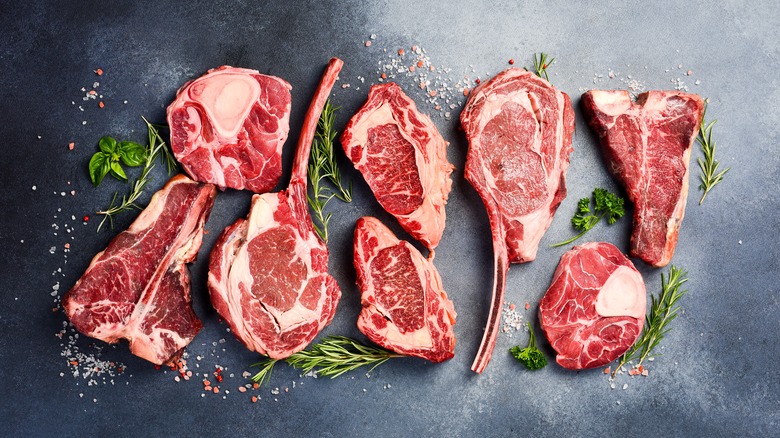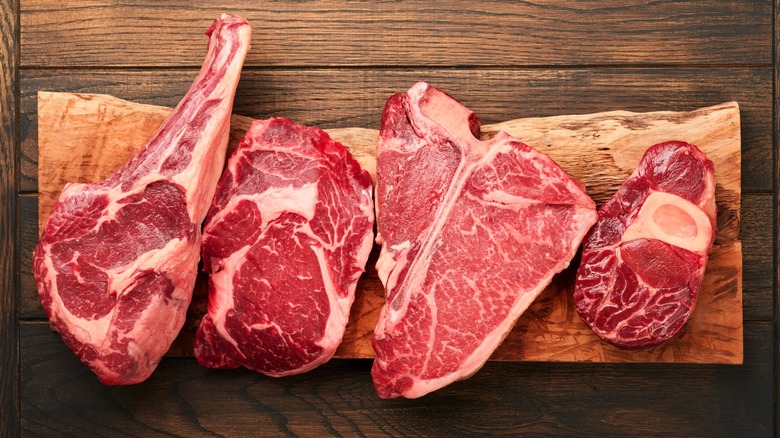What Is Marbling And How Does It Impact Your Steak?
Marbling. It's a word that you might associate with high grade, tender cuts of beef and the juiciest, most marvelous steaks you've ever laid eyes on. The word is so ingrained in the culinary vocabulary that you might have never stopped to think about what the term actually means. You may have an inkling that it refers to the fat in beef or at least the little grains of fat that run throughout a steak. And you wouldn't be too far off in this assumption. However, there's so much more to marbling than simply the presence of fat. So what is marbling, really, and how does it affect your steak?
You may notice that many choice steaks such as the Denver cut have little vein-like grains of fat that run throughout the meat. This is called intramuscular fat, and in essence, this is what people are referring to when they talk about marbling. This type of fat melts while your steak cooks, resulting in a juicy, flavorful, and tender piece of meat. This is not to be confused with intermuscular fat — the fat that sits between a cow's muscles, appearing on a side or end of a steak. While they can certainly render somewhat while cooking, these fats should be cut or limited, preferably in favor of some fine marbling.
Understanding the different types of marbling
Taking this information into consideration, you might go to your butcher thinking that if a steak has marbling, that means it's good, but the details are a little more complicated. Not all marbling is created equal, and it'd be wise to learn how to spot the different kinds of marbling to ensure you're getting the best steak.
There are three main categories of marbling that you're likely to encounter: fine marbling, medium marbling, and coarse marbling. Fine marbling has very small or thin bits of fat that appear throughout the beef. (Think Wagyu or Kobe.) The fine but plentiful fats will melt easily when cooked, giving you a juicy and tender steak. Medium marbling has veins of fat that are a bit bigger and sparser. The larger veins take longer to render, resulting in a less tender cut. Coarse marbling has large veins of fat that run throughout the steak. The issues with medium marbling are exacerbated with coarse marbling, and it may be difficult to prepare an ideal steak if you have to render the concentrated fat while also properly cooking the meat. Of course, more factors play into the taste of your beef, such as whether it's grass-fed or grain-fed, but as a rule of thumb, keep your eyes peeled for the finer marbling.

